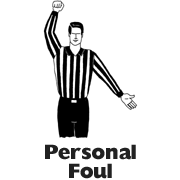Benefits Chalk Talk: Individual Tax Penalties Starting in 2014
By now you’ve heard all about the “individual tax penalties” that apply to most Americans if they’re not carrying health insurance by January 1st, 2014. Back in June of 2012, the Supreme Court of the United States upheld the “individual mandate” based on the congressional power to regulate tax.
What does this mean? It means that nearly every American will need to be insured by 2014, or face a yearly tax penalty.
In this blog post, we’re going to briefly explain the basic structure of this individual tax penalty, and how it will be “phased in.” Keep in mind that we’re emphasizing individual tax penalties only in this blog post. There are different mandates for employers with +50 employees, but we’re not discussing those tax penalties here.

As mentioned above, we used the phrase “phased in.” The bulk of the tax penalties will not hit right away in 2014; this will allow people to familiarize themselves with the new system. Here is how it will work, starting in 2014 if you decide not to purchase health insurance:
Uninsured Individual Tax Penalty in 2014:
- 1% of yearly income or $95/year (whichever is higher)
Uninsured Individual Tax Penalty in 2015:
- 2% of yearly income or $325/year (whichever is higher)
Uninsured Individual Tax Penalty in 2016:
- 2.5% of yearly income or $695/year (whichever is higher)
Uninsured Individual Tax Penalties after 2016:
- Increased annually by the Cost of Living Adjustment (COLA)
The penalty amounts are capped at the family level. The most that a family can pay in tax penalties is 3x the yearly individual amount listed above. In other words, if a family has five uninsured family members, only three of them will be subject to the yearly penalty.
You’ll want to discuss with your broker/insurance professional where you can find affordable health insurance by 2014, or face a new tax penalty. Again, as mentioned in this article, the tax penalties will increase over time. Our advice is to be proactive about it, and have a plan that makes the most sense for you and your personal situation. Your decisions will be most likely based on the Federal Poverty Level (or FPL). Contact us any time with questions. You can find an infographic on our Pinterest page here: PAIS Individual Tax Penalty Info
Thanks for stopping by, we hope you found our information to be valuable. Check back at our blog to get further information about funding healthcare. Also, please share with your friends, clients, colleagues, and family. Here are a few of our other information outlets:
Home Page: https://policyadvantage.com
Twitter: http://www.twitter.com/policyadvantage
Facebook: http://www.facebook.com/policyadvantage
YouTube: http://www.youtube.com/policyadvantage
Pinterest: http://www.pinterest.com/policyadvantage
Word Press (you are here): http://www.policyadvantage.wordpress.com

